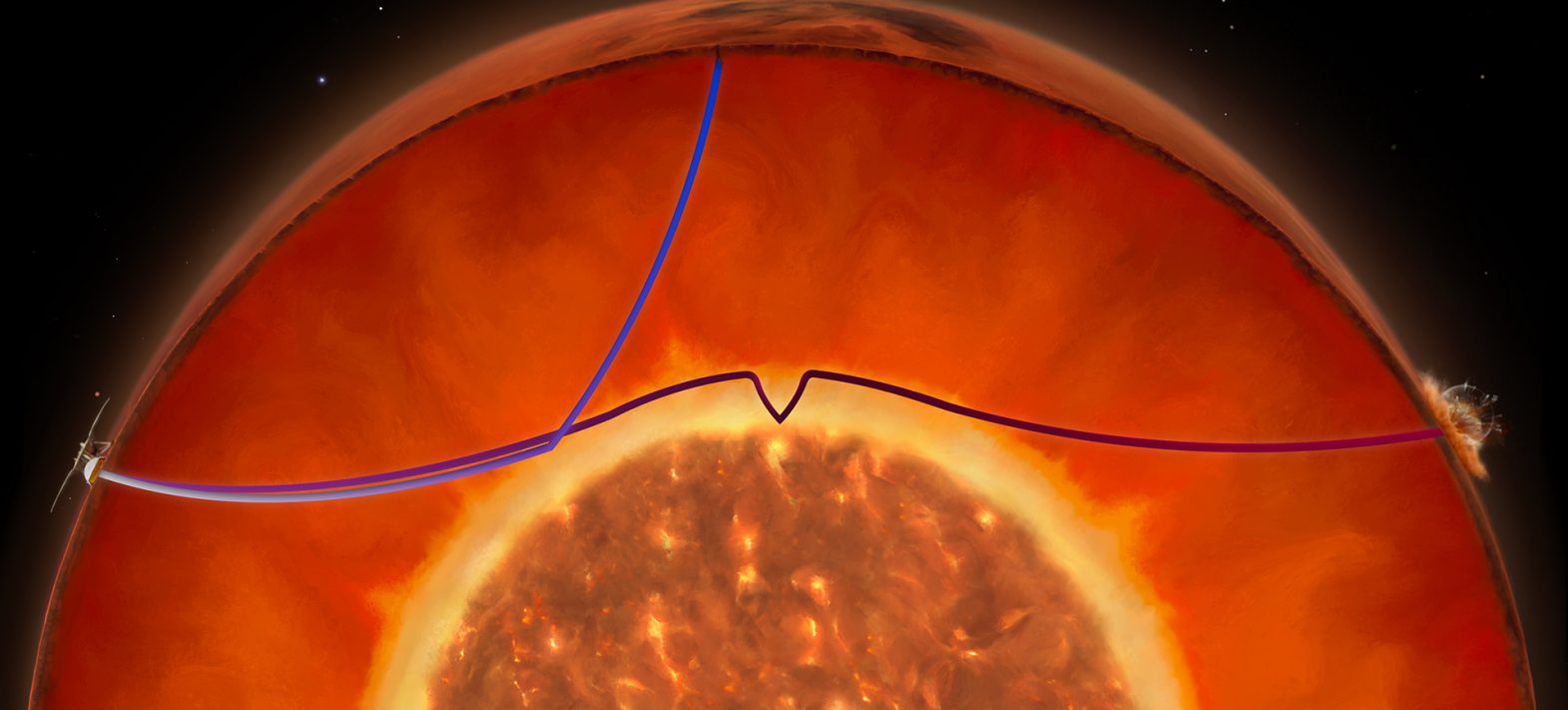The first data from the InSight mission made it possible to determine the internal structure of Mars in a series of papers from the scientific team published in the summer of 2021. However, since then, the analysis of new data generated by a powerful meteorite impact that occurred on September 18 2021, questioned the first estimates of the internal structure of the Red Planet. By studying the propagation times of waves generated by this impact, an international team led by Henri Samuel, CNRS researcher at the Institut de Pysique duGlobe de Paris, and involving scientists from CNRS, ISAE-SUPAERO and Université Paris Cité supported by CNES and ANR, as well as co-authors from the Royal Observatory of Belgium, the Universities of Maryland and Bristol, the Zürich Polytechnic School, the Russian Academy of Sciences, and NASA’s Jet Propulsion Laboratory, demonstrated the presence of a molten silicate layer at the base of the Martian mantle overlying the metallic core.
This new structure model, published on October 26, 2023 in the journal Nature, is not only more consistent realistic with all available the geophysical data, but also explains better the evolution of Mars since its formation.
In particular, the evidence of this stratification of the Martian mantle elucidates the abnormally slow propagation, hitherto unexplained, of diffracted waves from the September 2021 meteorite impact by their trajectory in the lower and fully molten part of the basal layer, where seismic velocities are low. Furthermore, for several older seismic events, the arrival times of waves measured at the surface of Mars are compatible with reflections of shear waves at the top of the molten layer (located several tens of kilometers above the metallic core) and not at the core-mantle interface, as previously assumed. Finally, the presence of this basal layer helps explain the observed trajectory of Phobos, Mars’s closest moon. Indeed, the upper and partially molten part of the basal layer efficiently dissipates the deformations generated by Phobos’s gravitational attraction. In contrast, the solid mantle above this layer is more rigid and seismically poorly attenuating, as suggested by the detection at the surface of Mars of waves associated with seismic events of relatively low magnitude.
A smaller, denser core than envisaged
The presence of this molten layer at the base of the mantle implies a metallic core 150 to 170 km smaller (i.e., a radius of 1650±20 km) and 5 to 8% denser (i.e., 6.5 g/cm3) than previous seismic estimates. This denser core would therefore be composed of an alloy with fewer light elements than previously required, and more compatible with cosmochemical data from the analysis of Martian meteorites and high-pressure experiments. The authors of the study therefore propose that Mars probably experienced an early magma ocean stage whose crystallization produced a stable layer at the base of the mantle, highly enriched in iron and radioactive elements. The heat released by the latter generated a basal layer of molten silicates located above the core, overlain by a thinner partially molten layer.
The study further states that such stratification of the mantle insulates the metal core, thereby preventing it from cooling and generating a thermal dynamo. “The thermal blanketing of Mars’s metallic core by the liquid layer at the base of the mantle implies that external sources are necessary to generate the magnetic field recorded in the Martian crust during the first 500-800 million years of its evolution. These sources could be energetic impacts, or core motion generated by gravitational interactions with ancient satellites which have since then disappeared”, explains Henri Samuel.
This stratified structure of the interior of the mantle of Mars, which contrasts with that of the Earth indicates different internal evolution of these two planets. Mélanie Drilleau, research engineer at ISAE-SUPAERO and co-author of the study, explains that “the discovery of this stratification in the Martian mantle opens new research horizons, since the seismic data recorded by the SEIS instrument of the InSight mission will now be reconsidered in the light of this new paradigm.”
References:
> Geophysical evidence for an enriched molten silicate layer above Mars’ core, H. Samuel, M. Drilleau, A. Rivoldini, Z. Xu, Q. Huang, R. F. Garcia, V. Lekic, J.C.E Irving, J. Badro, P. H. Lognonné, J. A. D. Connolly, T. Kawamura, T. Gudkova and W. B. Banerdt, Nature.
DOI : 10.1038/s41586-023-06601-8
Watch Henri Samuel’s explanation of the internal structure of Mars:








